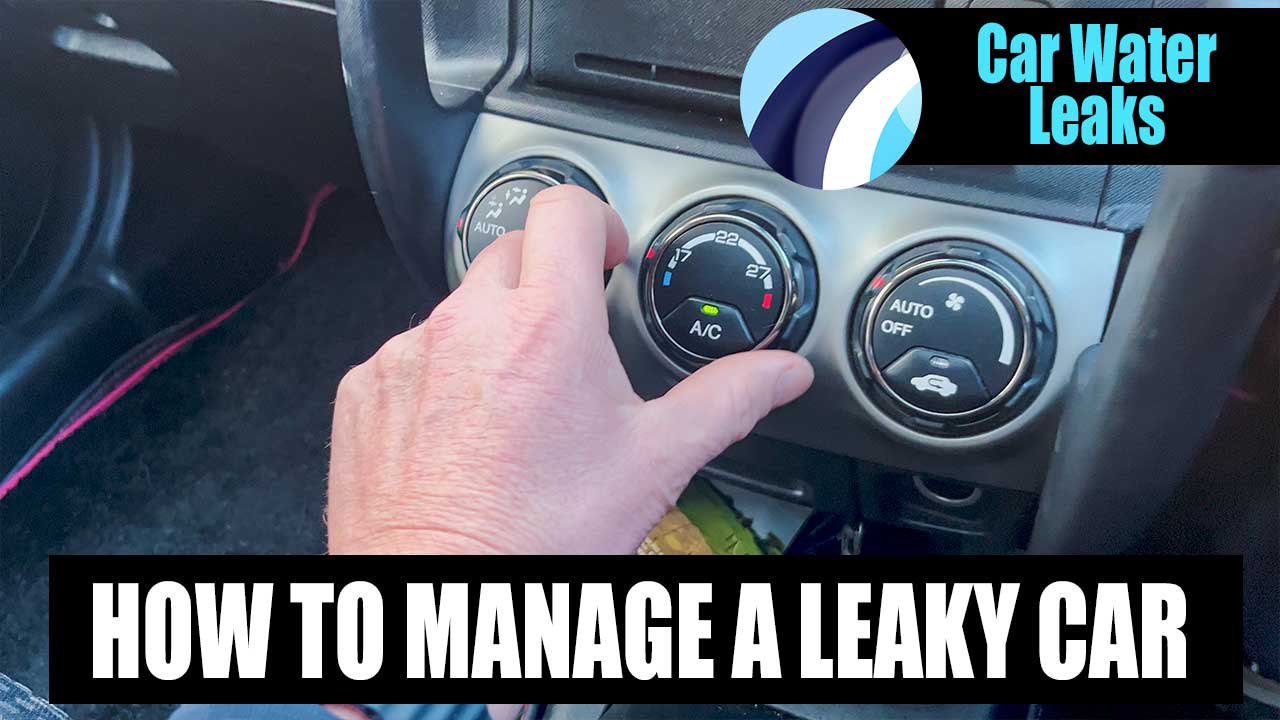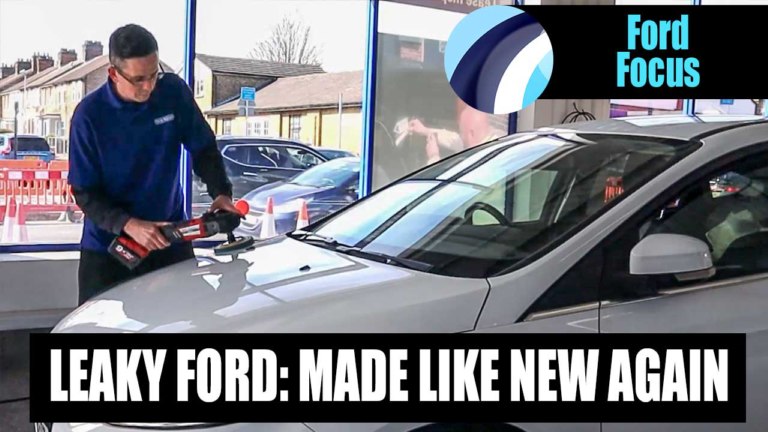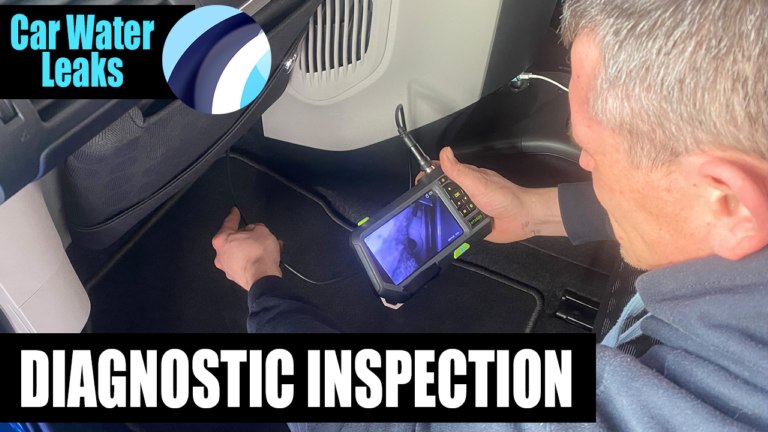How to manage a leaky car Video

While we recommend getting rain water leaks fixed and your car dried, it isn't always possible to do so right away. So in this video we discuss how you can manage a car with a water leak.
Firstly, you should ask if it is safe to drive your car at all. Rain water ingress can quickly cause electrical problems as water condensates on electrical connectors or even gets into control units. This isn't too much of a safety issue if it is just your electric windows that stop working, but is a sign that things are starting to go wrong. If you start getting warning lights on your dashboard, such as airbags having problems, it's probably time to park your car up, until it's fixed.
We strongly advise against driving hybrid and electric cars, there is just too much that can go wrong, and the longer you leave it, the more expensive the damage can become.
There is also mould to consider. Mould in cars should be taken very seriously as some mould is toxic, and any mould can cause quite severe symptoms, especially for people with asthma or compromised immune systems. You can minimize the risk with antifungal treatments and simply by airing the car out to get rid of mould spores, but be aware you are taking a risk.
We don't advise making efforts to dry the car until leaks are fixed. There is probably a lot more water in the car than you imagine, and it may be filling up quicker than you can dry it. What many people do is turn their heaters on and point them at the carpets. However, all they do is evaporate moisture into the air, making the car more damp, and causing the windows to steam up even more.
It's better to use your heater/air-conditioner to just keep the windows clear. However, we have found that many people don't know how to use their car's heater. You will have a circulate setting which you must turn off, this lets fresh, dryer air into the car and lets damp air out. Turning on your air-conditioner will also remove moisture from the air, and you sure ensure the side vents are pointing at the side window.
You can use cloths and towels to dry your windows, or even soak up water in other areas, but don't keep them in the car. Remember to take them out and hang them up to dry, even if it is just a small cloth for cleaning the windows.
With older cars, it is possible to limp along for quite a while with a leak if you can keep mould at bay, as they are less prone to electrical issues, however, we do recommend getting leaks fixed as soon as possible and your car thoroughly dried to prevent ongoing issues.
Related Videos
Here are some more of our latest #CarWaterLeaks videos
Car Water Leaks - 5 most common causes
Car water leaks can be frustrating, but identifying common causes can help you resolve the issue or know when to seek professional help.
Watch VideoLeaky Ford Focus made like New Again
This Ford Focus came to us with a water leak, but the customer decided to turn a negative into a positive and have Modern Car Restoration. The car left us looking like new.
Watch VideoCar Water Leaks - Why we do a 28-point check
Does your car have wet carpets? Steamed up windows and a damp, wet carpets, musty smell? Chances are you have a leak and rain water is getting in somewhere.
Watch VideoDodge Ram 1500 V8 Sport Water Leak & Graphene Coating
This Dodge Ram 1500 V8 was brought in after its owner experienced multiple cases of water leaks in the front - especially under the mats and along the rubber tubing of the door, causing the underneath of the car doors to be wet.
Watch Video
Can We Help You?
"We can offer specialist advice on the best car service to suit your requirements"
When bringing your car to New Again, we often ask you to explain exactly the reason for having your car Protected, Valeted or Repaired. Once we understand exactly what it is you are trying to achieve, we will appraise your vehicle using our detailed appraisal check-sheet allowing us to identify areas of concern and tailor specific services that match your requirements and budget.
If you are not sure what service you need and would like to speak to one of our technicians, simply request a callback by filling in the form on our contact page.




Share this blog